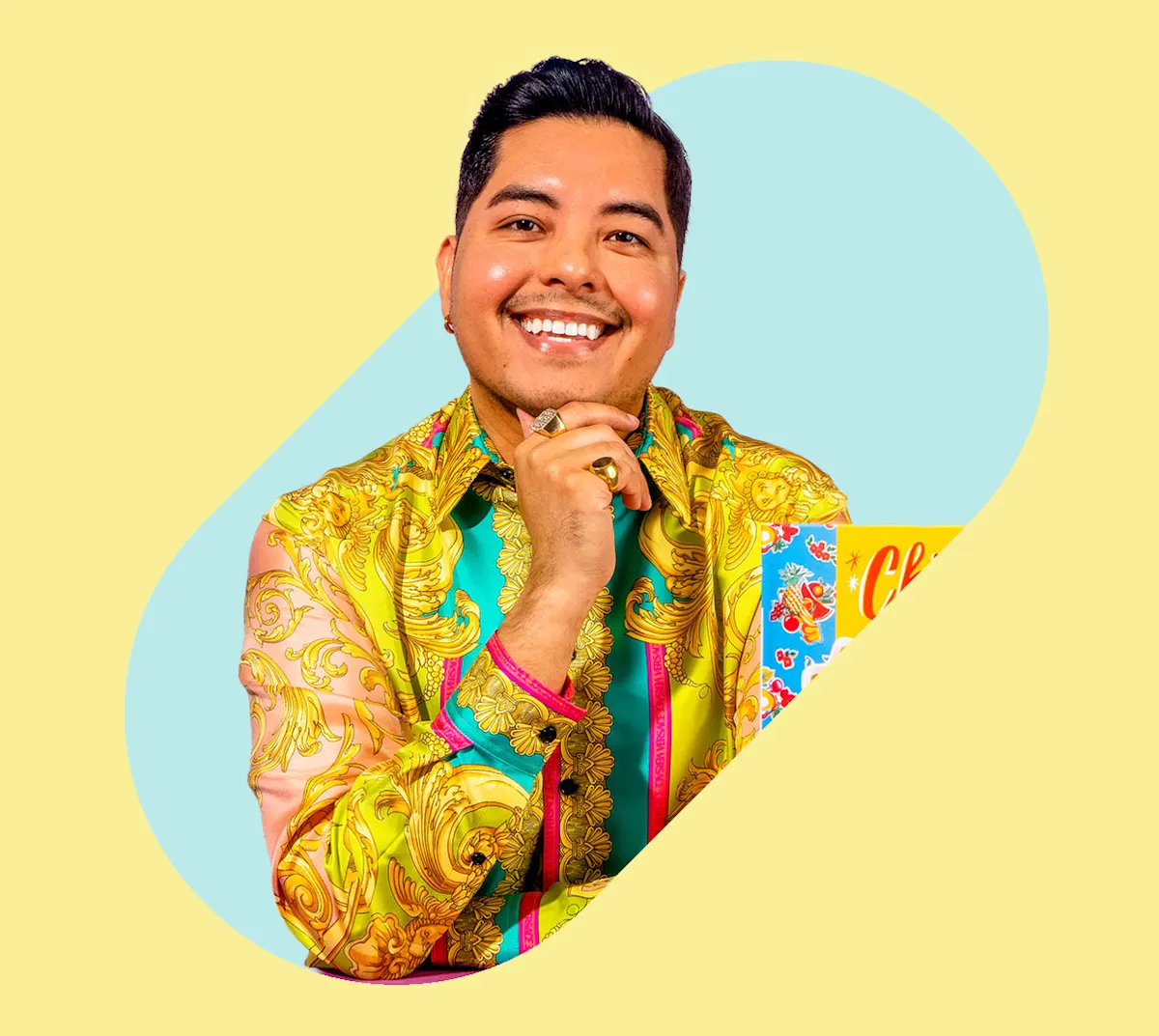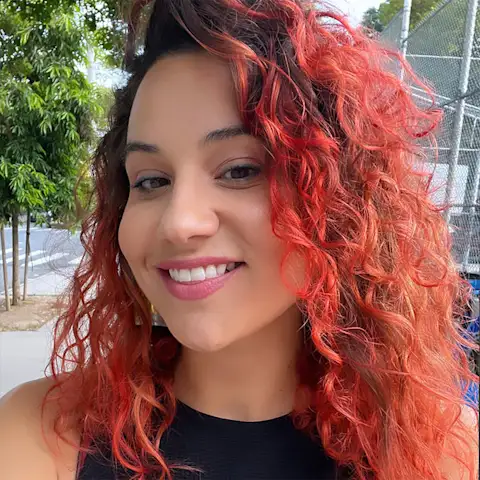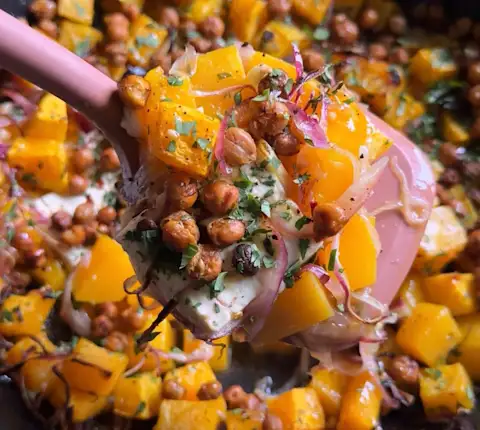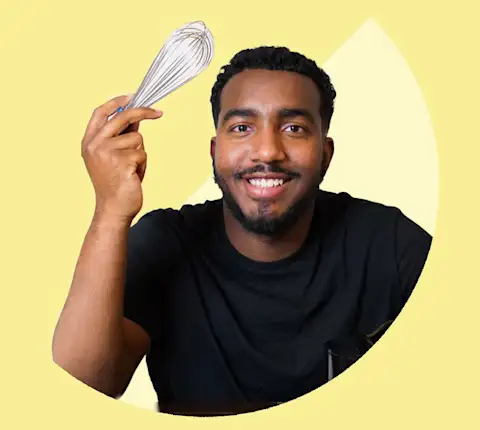*Este artículo incluye menciones de tiendas o marcas que son socias de DoorDash, por lo tanto DoorDash puede recibir una comisión si eliges realizar una compra de estas tiendas o marcas.
Para Esteban Castillo, alias @chicanoeats, cocinar empezó como una necesidad. Mucho antes de convertirse en el galardonado autor de libros de cocina que es hoy, Castillo era un estudiante universitario como cualquier otro: lejos de casa, echando de menos las comidas nocturnas hechas por mamá que antes daba por sentadas, y hambriento.
"Crecí en el sur de California y viví allí toda mi vida hasta que me trasladé a la universidad, al norte, en el condado de Humboldt", recuerda. "Estaba a 13 horas en coche de casa, varado en medio de la nada. Podría contar el número de restaurantes mexicanos con una mano. Fue un choque cultural muy grande".
Los padres de Castillo eran inmigrantes del occidental estado mexicano de Colima, donde sus abuelos dirigían (y siguen dirigiendo) un restaurante en el patio trasero de su casa. Creció en Santa Ana, California, donde más de tres cuartas partes de la población es latina, y la comida que comía en casa lo reflejaba: frijoles de la olla, mole, pozole, birria, agua fresca y agua de arroz (una bebida parecida a la horchata con lima que es la especialidad de su madre).
Una vez en el norte, llamaba a su madre y a otros familiares para pedirles recetas de comida casera. "Pero sólo me decían: 'Añade un poco de esto o un poco de aquello', lo que me hacía sentir aún más confuso", recuerda. Así que Castillo se lanzó a la cocina, confiando en la memoria muscular y el instinto.
"Tuve que volver a ser un niño: pasar tiempo con mis abuelos, que se ganan la vida cocinando; tener que sentarme allí mientras hacían tacos", dice Castillo. "Me di cuenta de que había absorbido muchos conocimientos. Sólo tuve que empezar a cocinar para darme cuenta de que ya sabía lo que hacía".
Una de las primeras cosas que Castillo recuerda haber preparado son chiles rellenos. "Si nunca los has hecho antes, es un proceso muy largo", dice. "Pero a mitad de camino me di cuenta de que estaba en piloto automático, haciendo este plato de la misma manera que siempre había visto hacerlo a mis padres y a mis abuelos. Fue increíble. Es la razón por la que empecé a cocinar".
En la universidad, Castillo se especializó en relaciones públicas y en diseño gráfico. Como sus estudios correspondían al departamento de periodismo, también tuvo que incorporarse a una de las publicaciones estudiantiles. Al no ver ninguno que se sintiera plenamente representativo de su grupo demográfico, decidió ayudar a un amigo a fundar un nuevo periódico bilingüe.
"Se llamaba El Leñador, y hoy en día sigue funcionando muy bien. Yo era el director artístico, así que me ocupaba de la presentación, pero también acabé proponiendo una columna llamada 'Mi Cocina, Mi Sazón', en la que presentaba una receta latinoamericana diferente cada vez que íbamos a la imprenta", explica. "Ahí también empecé a escribir sobre comida".
La escritura gastronómica pasó a un segundo plano después de que Castillo se graduara en la universidad y empezara a trabajar a tiempo completo en marketing para una organización federal sin ánimo de lucro, pero odiaba el trabajo. "Todo tenía que seguir unas directrices y normas muy estrictas", afirma. "Realmente no había margen para ningún tipo de creatividad".
El marido de Castillo le animó a crear un blog gastronómico para expresar su creatividad (y sus conocimientos de cocina, fotografía y redacción gastronómica adquiridos en la universidad), y así nació Chicano Eats.
"En la universidad, cuando buscaba recetas en Internet, me parecía un espacio dominado por las 'mamás blogueras', y no me sentía identificada con ninguna de las voces o recetas que había", explica. "Así que fue como una obviedad centrar mi blog en los alimentos que he comido durante mi infancia. Quería crear un recurso que fuera útil para ese mismo chico que yo era en la universidad, que dejaba a su familia por primera vez y probablemente lo pasaba mal para conseguir estas recetas."
El blog, lanzado en otoño de 2016, despegó rápidamente.
"Chicano Eats se convirtió en una válvula de escape para desahogarme y compartir historias", dice Castillo. "Recuerdo un post concreto justo después de las elecciones, en el que hablaba de cómo me sentía de niño y cómo me retrotraía a sentimientos similares de ser rechazado por hablar español en el patio de recreo. Fue como una regresión a una época en la que sentía vergüenza por ser 'otra'".
Mucha gente conectó con ese post, y con el blog en su conjunto. Castillo estableció una relación especialmente estrecha con sus compatriotas mexicano-estadounidenses de primera generación, atrapados en ese familiar tira y afloja de vivir entre dos culturas.
"Sentimos que no encajamos ni aquí ni allí, porque para la gente de aquí no somos lo bastante estadounidenses porque hablamos español, pero en México no somos lo bastante mexicanos porque nacimos en Estados Unidos y también hablamos inglés".
Esta perspectiva bicultural influye en la forma de cocinar de Castillo. "No sólo muestro recetas mexicanas tradicionales, sino que también me gusta tomar ingredientes mexicanos tradicionales y utilizarlos de formas no tradicionales", dice. "El enfoque que mi madre daba a la cocina cuando yo era niño es el mismo que yo empecé a dar a la comida cuando lancé Chicano Eats".
Castillo recuerda los veranos de su infancia en el patio trasero, donde su familia tenía una piscina. "Pedíamos hamburguesas y mi mamá hacía lo que ella pensaba que eran hamburguesas, donde tomaba carne molida y picaba cilantro, lo doblaba y luego, en lugar de hacer hamburguesas, ponía una bola de carne molida en la prensa para tortillas y la presionaba para que fuera casi como una smashburger. Sería tan delgada, pero sólo ver cómo era capaz de adaptar sus recetas a las cosas a las que tenía acceso en SoCal en ese momento era divertido y liberador. Del mismo modo, mis recetas reflejan mi identidad como mexicano-americano".
Cuando comenzó a trabajar en su primer libro de cocina, también titulado "Chicano Eats", la esperanza de Castillo era simplemente construir sobre lo que ya estaba haciendo con el blog: compilar un recurso que sería útil para cualquier persona, en cualquier etapa de su juego de cocina. "Me aseguré de incluir en el libro todas las recetas básicas: frijoles para cocinar, recetas de arroz, mole, pozole..."
Pero, para sorpresa de Castillo, la parte del libro que más atrajo a la gente fue el capítulo de postres. "Cuando salió el libro, en junio de 2020, hice un chocoflan de dulce de leche que se hizo viral", cuenta. "Yo decía: 'No entiendo por qué la gente está en la cocina horneando en pleno verano, pero ¿sabes qué? Me encanta".
Esta gravitación —y una respuesta abrumadoramente positiva de lectores y críticos por igual— sembró las semillas de su siguiente libro de cocina, "Chicano Bakes", que se centra por completo en los postres mexicano-americanos. En un principio, la editorial se opuso a la idea, alegando que no creían que hubiera público ni necesidad de un libro dedicado por completo a los dulces mexicanos. Pero Castillo persistió.
"Pienso para mis adentros: 'Es una auténtica locura que esta sea la respuesta que estoy recibiendo. Otras personas son capaces de reinventar la galleta de chocolate año tras año. Todos los años nos regalan los mismos libros de galletas, tartas y pasteles. ¿Por qué no puedo comer un trozo de ese pastel?".
Finalmente, con la ayuda de su agente, Castillo lo consiguió. "Chicano Bakes" salió a la venta en noviembre de 2022 e inmediatamente entró en la lista de los mejores libros de cocina del año del New York Times.
"Se agotó en tantas tiendas diferentes la semana en que se publicó, que no podía ni comprenderlo", dice. "Es un regalo poder compartir estas recetas que son difíciles de conseguir, y hacerlas accesibles a todo el mundo es algo de lo que realmente me enorgullezco".
Por eso Castillo hace lo que hace: por necesidad. "Siempre tengo en mente a aquel Esteban universitario", dice. "Quiero asegurarme de que estoy cuidando de esa persona que fui, intentando abrirme camino en la cocina".
Aquí tienes la receta de Esteban Castillo de Agua Fresca de Mango:
Rinde aproximadamente 8 tazas
Ingredientes
1½ lbs de mango maduro, cortado en cubitos
6 tazas de caldo de agua, dividida
Jugo de 1 lima
Azúcar, a gusto
Rodaja de lima, para decorar
Preparación
En una batidora, mezcla el mango, 4 tazas de agua y el zumo de lima. Bate durante un minuto a velocidad alta hasta que todo esté suave.
Se cuela en una jarra, se añaden las 2 tazas de agua restantes y se añade azúcar al gusto.
Servir con hielo y una rodaja de lima.
CRÉDITO DE LA FOTO: cortesía de Esteban Castillo






